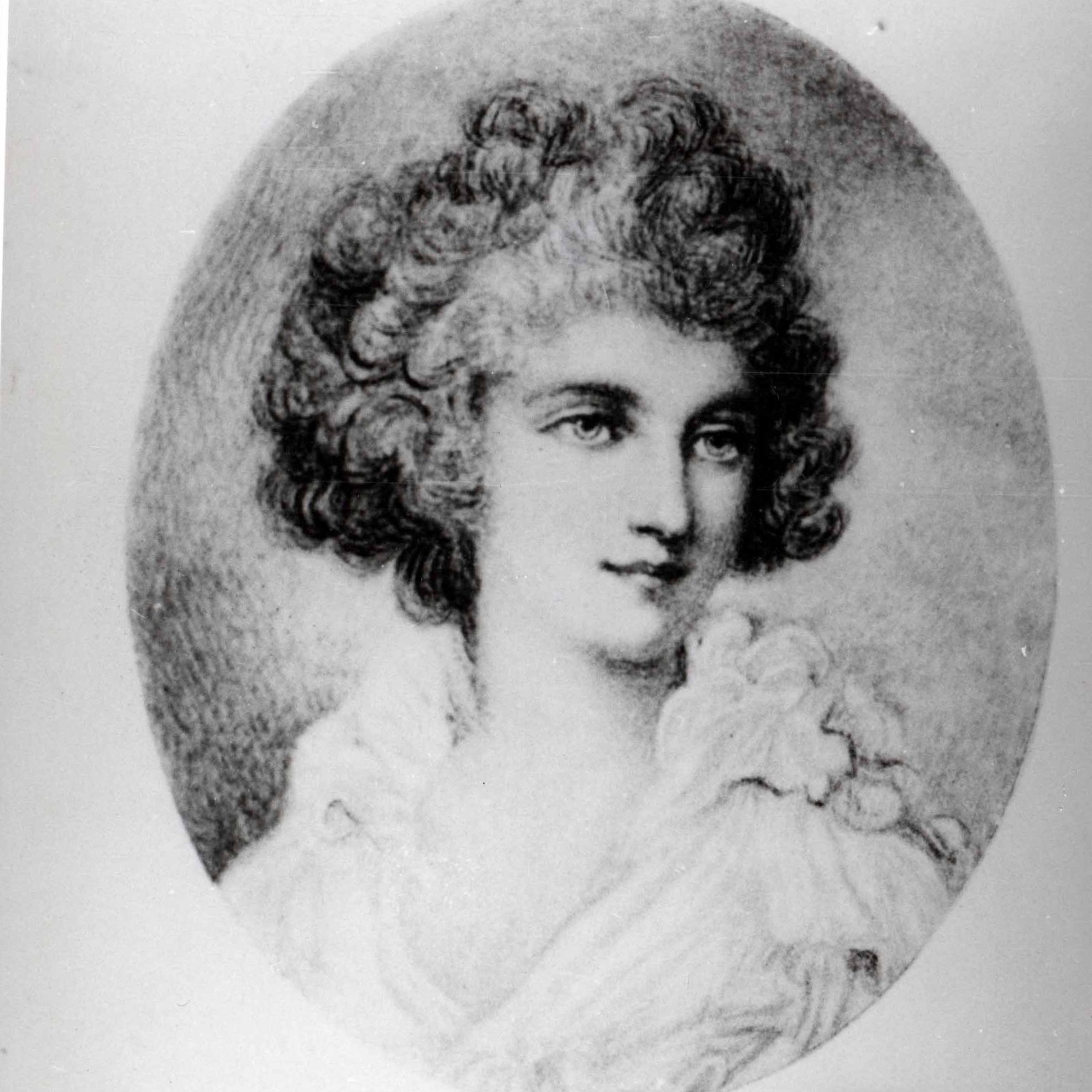Lady Anne Barnard
18th – 19th Century
A drawing of Lady Anne Barnard, 1783. Image: E2848, Western Cape Archives and Records Service
“I think aloud on paper, add my opinions to it, tell my story true or false as I chance to hear it… sometimes imagining addressing my sisters, sometimes writing… for myself only.” - Lady Anne Barnard commenting on her diaries, September 1799.
Few women are as synonymous with the Cape as Lady Anne Barnard. She was born in Scotland as Anne Lindsay to the Earl of Balcarres and his young wife. Anne was the eldest of 11 children. She was particularly close to her sister Margaret and the two set up home in London, Margaret with her husband and Anne next door in a modest apartment. She rejected many suitors, including Henry Dundas, the most powerful Scottish politician who served as the secretary of the war council. Her connection with Dundas was long term and he would feature as a key figure in her move to the Cape.
Anne was 43 years old when she accepted a marriage proposal from Andrew Barnard. He was a junior officer with no rank, no fortune, two children
and much debt. At the time of accepting his proposal she nervously wrote to a number of her friends stating that, “The world will think I am absurd for accepting!” Once Andrew and Anne were married, she asked Dundas for a job for her young husband. Dundas obliged with a daring proposal: Andrew could get a job but as secretary to Lord George Macartney at the Cape of Good Hope. Anne was petrified to leave England for the Cape, but she was determined to join her husband. They left London armed with “liquor, pickles, Windsor chairs, dogs, guns, port, stationery, lamps and horses.”
At the Cape, Lady Anne was the official hostess and first lady of the Colony as Lord Macartney’s wife had stayed behind in London. Anne was more than just a hostess and she had found happiness in the Cape. This happiness was something that she didn’t find anywhere else. She climbed Table Mountain in her husband’s trousers, she documented botanical observations and sketched dozens of watercolours capturing the life, look and feel of the Cape at the turn of the 18th century.
Watercolour painting by Lady Anne Barnard of an enslaved woman from the Cape of Good Hope who worked as a “under-cook” in her household, 1793. Image: Lady Anne Barnard, Public domain, via Wikimedia Commons
Watercolour painting by Lady Anne Barnard of a Khoekhoen woman she describes as the “Wife of the Chief”, 1799. Image: Lady Anne Barnard, Public domain, via Wikimedia Commons
She journeyed into the interior, visiting Swellendam via Stellenbosch, Genadendal, and then Saldanha Bay and Blouberg before heading home to the Castle. The trip took a month, but it produced many moving watercolours of the people Lady Anne met on her travels, including enslaved workers and indigenous individuals. Her stay in the Cape lasted five years but it placed her in the realm of traveller, writer, artist, and observer. Her drawings and diaries still serve as references of life in the Cape during the first British Occupation.



